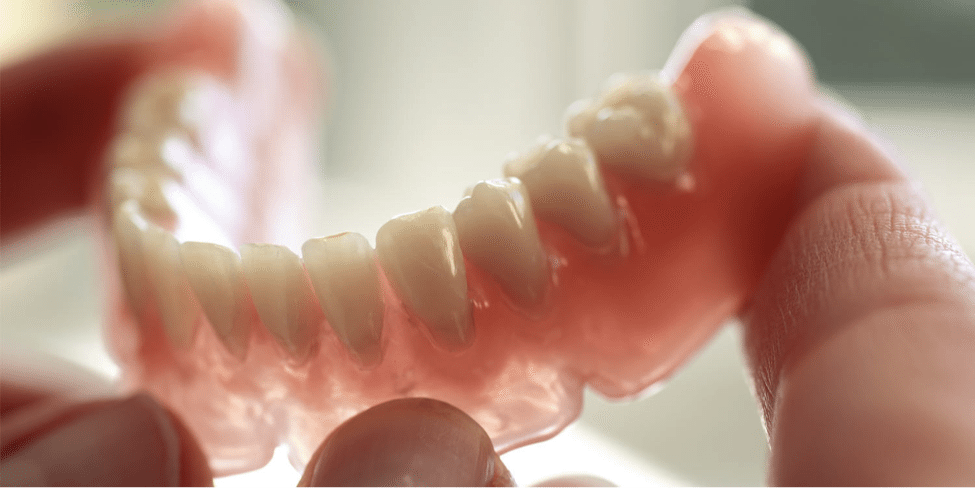As we all know, there are many applications for 3D printing, especially within the medical industry. In particular, Additive Manufacture is gaining a significant position within dentistry. Today, millions of orthodontic braces, dental crowns and bridges are being made with the help of 3D printing. Industrial 3D printers are being used to create these high end, high precision dental parts, and the printers used to print them cost over a million US dollars.
Previously, dentists relied on investment casting to create the small metal parts in false teeth, which is a process with several steps:
- Create the patient’s tooth model out of wax
- Create a ceramic mould of the wax model
- Melt the wax
- Pour the molten metal into the mold
Once the mould is opened, the cast can be removed and prepared for use. This process dates back around five thousand years, and is not only labour intensive, it also isn’t always completely accurate. With the help of 3D printing, the process of creating implants can now be a lot faster and accurate with less hassle.
Surgical Use
At University of Louisville School of Dentistry, specialists have developed a digitally aided surgery technique which involves the 3D scanning of patients’ jaw, gums and teeth, making a set of temporary teeth through CNC milling and finally 3D printing the templates and surgical models required. The specialists are testing out a fully digitized approach to computer-aided dental surgery. The Journal of Prosthetic Dentistry published an article on this. Researchers described the fully digital surgical procedure in detail, and they believe that this technological advancement could be greatly beneficial for a hassle free surgery experience.
In order to test the efficiency of the 3D scanning and printing protocol, the team used their method in the replacement of two teeth of a female patient at the School of Dentistry’s clinic. First, the patient’s mouth was 3D scanned to obtain the required digital information instead of taking an impression of the teeth in a physical mold. The scanning process is said to be a lot less invasive and more accurate. After gathering this information, the team began the process of designing the restoration teeth. For this, CAD software was used followed by CNC milling. Then, using some 3D printed templates and models of the mouth, the surgeon placed all the dental implants without any disruption in the gum flaps of the patient.
Applications
3D printed products have also made their way into the human body through many other areas of medical science such as hearing aids and artificial limbs. More than sixty million custom hearing aid shells and molds have been manufactured using 3D printing in the last sixteen years. Many patients have been fitted with various 3D printed orthopedic implants, titanium jawbones, hip replacement joints and other prosthetic limbs. Also, around one hundred thousand knee replacements have been performed using 3D printed surgical guides every year.
The healthcare industry as a whole is swiftly adapting to new technology that involves additive manufacturing. No human being is the same, hence the need for the customized production of teeth, limbs and other body parts. 3D printing can offer exactly that, scanned models and printers build objects just as they are designed. Layer by layer, the material is printed according to the medical scan provided as a CAD file. This type of software proves to be cheaper and faster, and could replace the tools used in traditional factories.
The Current Market
Additive manufacturing in medical science is still a small sector compared to the huge machine tool market, however, 3D printing is advancing rapidly in a wide range of sectors including healthcare. According to estimates, the growth of 3D printed services and products last year was 26%, which is a net worth of around $5.2 billion. This large figure happens to be the tip of the iceberg as McKinsey, a management consultancy firm says that the economic growth can be as much as $550 billion every year by the year 2025. This is due to the fact that 3D printing provides low prices, better quality products, unprecedented lower production time and of course, better health for patients.
Overall, using 3D printing for teeth implants and surgeries could bring unprecedented revolution in the healthcare sector.
About Hasit Vibhakar, Chairman, CEO, President at Telesis Technology Corporation Pvt Ltd
Hasit Vibhakar is a proactive, performance-driven middle market executive with 20 years + progressive expertise in C-level leadership and problem solving for additive manufacturing, advanced CNC manufacturing, Additive Manufacturing, 3D Printing, supply chain, technology services, and startup operations. Proven track record of enhancing enterprise value and shareholder value. Experienced at building small cap and middle market companies.
Hasit Vibhakar is an Industrialist specializing in strategic direction and growth. A seasoned c-level business executive with many years of proven track record of building enterprise value and shareholder value. He has successfully started eight technology, industrial and manufacturing enterprises and all have been successfully acquired at premium multiples in the industry. Prior to being a serial entrepreneur he has been employed with leading aerospace, telecom, technology, industrial and supply chain based companies.



